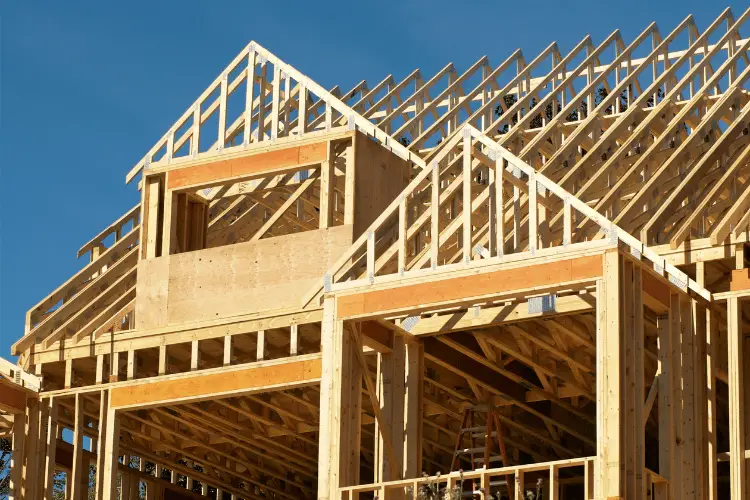We strive to provide you with authoritative, trustworthy, and expert advice. In doing so, the staff at texaswalkabout.com performs extensive research, editing, and fact checking to every post on this webiste. If you feel that this article can improve, please feel free to reach us at staff@texaswalkabout.com
People have been talking more and more about this crazy housing trend: Texas barndominiums. Yet, what is it and how can we get one? And more importantly, do we even want to?
Interested in exploring this housing option further? Then you’ve come to the right place.
In this post, you’ll find info on what makes a barndominium, how to build one, its cost, and its pros and cons.
Let’s get started.
What Is a Barndominium?
Barndominiums, aka barndos, are a trendy Fixer-Upper-inspired style of housing. They refer to a barn or a barn-shaped home built from the ground up and have been turned into a modern space for home and work.
It’s worth mentioning that barndos don’t necessarily need to have been a barn to begin with. Plus, they can take multiple forms.
Some barndos are developed with a multiple-room layout, whereas others have an open-floor design. Then, you have barndos that feature an open space that can be used as a workshop, garage, or whatever you wish to do with it.
No matter the design you opt for, they all typically feature plenty of customizable spaces and large energy-efficient windows.
Barndos are also known for having high ceilings that reach about 14 feet high. Compared to the typical 8–9 feet high ceiling of a conventional home, that’s huge!
The term, which was first coined by Connecticut real estate developer Karl Nilsen in 1989, is a combination of ‘barn’ and ‘condominium.’
So, barndos have been around for some time. Yet, it wasn’t after an episode of the HGTV show ‘Fixer Upper’ aired in 2016 that their popularity increased. In the episode, home renovation experts Joanna and Chip Gaines converted a barn in the Waco, Texas area into a contemporary living space.
After the episode, search interest in barndominiums increased exponentially. While they can be found in various regions around the country, barndos are more popular in the south, particularly in Texas.
How Do You Build a Barndominium?
Here are the steps for building a barndominium in Texas from the ground up.
For these steps, you can do it on your own provided you have a fair amount of DIY experience. Yet, we recommend hiring a general contractor to help get your barndo started out on the right foot. It may cost you a bit more, but it’ll save you tons of hassle and heartache in the long run.

Step 1: Find a Plot of Land
Start by looking for a plot of land big enough for the kind of barndo you’re planning to build.
Make sure that the property you have your eye on is zoned properly for the structure. You can begin by looking in rural areas where the zoning rules aren’t as strict as within the confines of the city.
Step 2: Design a Floor Plan
Take the time to research all your options online. Don’t forget to factor in space and budget to narrow down your choices.
This way, you’ll be able to pick out the design that best appeals to you and your needs.
Step 3: Plan the Foundation
In general, almost all barndos start with a concrete foundation. The reason why concrete is the number one choice for many contractors is that it’s the strongest material out there. Plus, it can be poured into almost any shape.
There are also a couple of other options you can choose from, such as block foundations. While block foundations are also strong, they’re not quite as versatile to work with as concrete.
In addition to the actual material of the foundation, you also have to decide whether you want a crawl space or a basement underneath the structure.
Step 4: Decide on the Walls and Roofing
The structure of the barndo is typically constructed using a steel building kit. It makes it more durable over time and better able to withstand various weather conditions.
As for the roofing, it’s pretty much the same as you would have on a traditional house. The biggest difference is that most barndos feature a 26-gauge metal roof rather than standard roofing materials, such as EPDM rubber, polyurethane foam, or wood shingles.
Some of the most common roof styles include:
- Gable barndominium roof
- Gambrel barndo roof
- Shed barndo roof
- Monitor barndo roof
- One or two of these styles combined
Step 5: Set Up the Electrical and Plumbing
As with any type of housing, one of the last steps is putting in the electrical and plumbing systems. After that, a layer of spray foam insulation is added followed by setting up the heating, ventilation, and air conditioning (HVAC) system.
How Long Does It Take to Finish Building a Barndo?
Barndos usually take around 9–18 months to complete. That’s slightly faster than building a traditional home.
However, the exact time depends on various factors, including whether the barndo is being built from the ground up or from an already existing barn.
How Much Does It Cost to Build a Barndominium in Texas?
Calculating the cost of building a barndo depends on various factors, including your location, the size of the structure, and the finishings. It also varies according to the type of materials used in the building process.
You also have to factor in what the current market prices are for those materials as well as what your contractor will charge you.
Yet, based on our research, the average cost of one fully finished square foot is approximately $100. In comparison, a traditional home will cost around $150 per square foot.
Luckily, Texas has low tax rates and a more stable economy than most other states. That’s why barndo prices tend to cost less compared to other places.
For example, in Texas, the cost of building a barndo can average between $70 and $95 per square foot. In contrast, it can run between $115 and $145 per square foot for a house.
Texas Barndominiums: Pros and Cons
Barndominiums tend to have a polarizing effect. People either fall in love with them at first sight or can’t stand them.

That’s because this housing trend is a lifestyle choice. It’s often sought out by those who prefer to live in rural areas away from the hustle and bustle of the city.
Yet, they still want a comfortable space to live in while still having room for a workshop or a large storage space.
Regardless of how you feel about them, building a barndo in Texas comes with numerous benefits. And as with everything in life, it also has a couple of drawbacks worth checking out.
Take a look.
Pros
The first advantage of barndominiums is the way they look. They have this rustic, homely feel on the outside. At the same time, the interior can boast as many chic and contemporary flourishes as you want.
Putting aesthetics aside, barndos are more cost-effective to build and maintain than a traditional house. So, you can enjoy a lot of ample open space while saving money on labor costs.
Barndominiums also offer the benefit of sturdiness and durability. Having a frame made from steel is sure to hold up much better against the elements than bare wood.
They’re also resistant to fire, high winds, and even termites. In fact, because many barndo manufacturers in Texas are 100% confident of how long-lasting the exterior steel is, they offer a warranty of up to 35 years against failure.
Also, if the barndo is well-constructed using high-quality spray foam insulation and energy-efficient windows, it can cut back drastically on your energy bills.
Another plus is that in many parts of Texas, you can enjoy lower tax and insurance rates on your barndo. This is primarily due to the state’s relatively low living costs. It’s also because insurance rates are generally lower for structures constructed from steel compared to those made of wood or brick.
Cons
One drawback comes from barndo owners who have metal roofs. Their biggest complaint is that when it rains, especially during heavy storms, things can get a bit loud.
The metal on the roof acts as a resonator and amplifies the sounds of rain, wind, and thunder much more than a traditional roof.
The most effective way to dampen the noise is by adding an additional layer of insulation beneath the metal roofing. This will absorb the sounds while making the barndo more energy efficient.
The second disadvantage is that there are certain areas in the barndo where it can be challenging to get a cell signal because of the metal framing.
The good news is that there’s a way to get around that. Nowadays, there are different types of cell signal boosters, also known as signal amplifiers, designed to receive signals from nearby cell towers. Then, with the help of a donor antenna, they boost the signal, then rebroadcast it into the indoor space inside your barndo.
A Final Note
Barndominiums may often be regarded as being geared toward a certain lifestyle. Still, barndos are gaining in popularity not just in Texas, but all over the US, and for good reason.
They’re super sturdy and cheaper to build than a standard house. They also offer endless design possibilities, making them easily customizable.
So, if you’re looking to build a new home in Texas, then this energy-efficient alternative to conventional homes could be the right choice for you.

Robert is a native Texan writer for TexasWalkabout, passionate about Texas culture and food, wearing cowboy boots daily. He interviews local pitmasters and chefs, tastes and reviews innovative dishes, and explores hidden gems and iconic landmarks. Graduating magna cum laude in Cyber Security from the University of Texas at San Antonio, Robert excels academically and professionally while also being knowledgeable in Texas history and culture. After living in Texas for over 28 years, he provides first-hand and trustworthy information for all your Texas needs!

